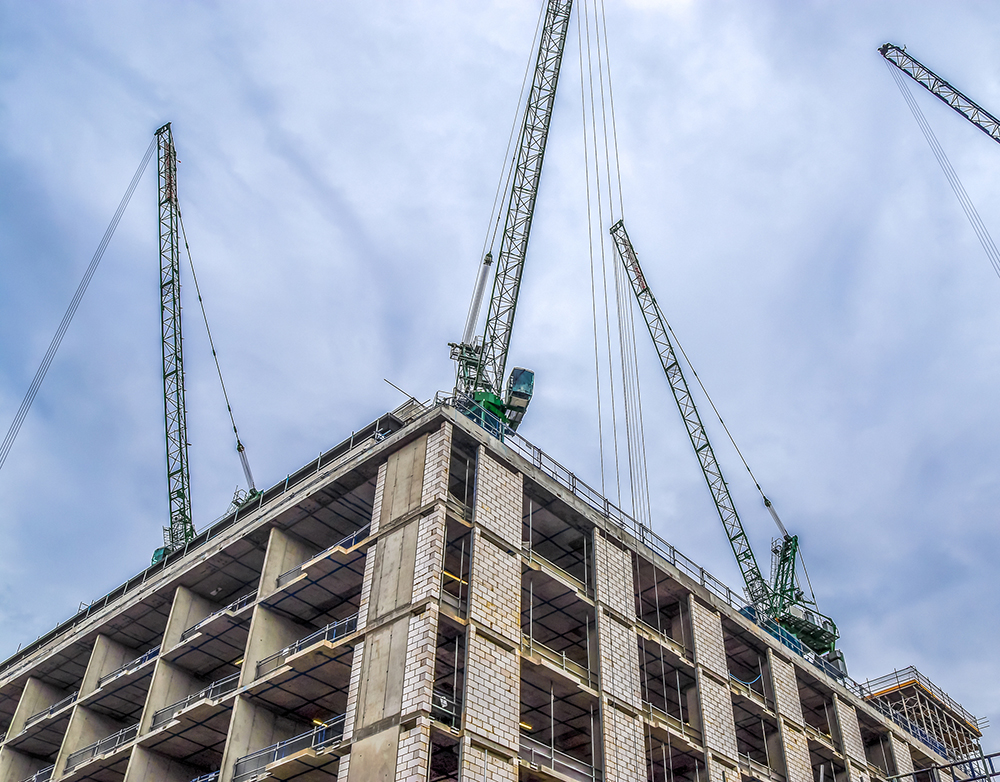
Extending construction time and adding thousands to the cost are major implications to the new Gateways regime. In this second article in its series on the Building Safety Bill, John Forde outlines what the Gateways mean for the delivery of higher-risk buildings.
A key recommendation of Dame Judith Hackitt’s Building a Safer Future review of the building industry was the creation of a series of safety checks and inspections for higher-risk buildings, overseen by a centralised building safety regulator.
The Building Safety Bill, published in July and already given its first and second readings in the House of Commons, goes some way to setting out the new regulatory regime: establishing the building safety regulator who will sit in the Health & Safety Executive; and defining higher-risk buildings.
The Gateways regime represents a sea change for the building industry in England, increasing the time and cost of building and maintaining higher-risk buildings, and requiring a massive upskilling of all those working on affected projects.
However, there’s very little in the Bill itself about the Gateways regime – just that the Building Regulations will be amended to set out specific duties in respect of building works for higher-risk buildings. It falls to the explanatory notes and impact assessment, also published with the Bill, to fill in some key details about what the Gateways will involve.
What are higher-risk buildings?
So which buildings will the Gateways regime apply to? Higher-risk buildings are defined as buildings in England that are at least 18 metres in height or with at least 7 storeys and containing two or more dwellings.
Height will be measured from ground level to the top floor surface of the top storey, (ignoring any storey which is roof-top machinery or plant). This is expected to include houses, flats, serviced apartments, supported accommodation and student accommodation facilities.
In a surprise, the government has confirmed that hospitals and care homes meeting the height requirements will also be covered by the Gateways rules (but won’t be required to follow the in-occupation obligations set out in the Bill).
Prisons, hotels and military premises will be excluded for now, though the secretary of state has powers to extend the scope of higher-risk buildings following advice from the regulator and a cost-benefit analysis.
What are the Gateways?
Gateways are mandatory safety checks that will be required as part of the design and construction of all new higher-risk buildings, and the major refurbishment (ie requiring planning consent) of existing higher-risk buildings. The regime will provide a series of ‘hard stops’, whereby the next stage of the project will not be able to proceed until the relevant Gateway is achieved. It is expected that the Gateways will apply to existing projects at the point the rules come into force, so some projects may be required to pass one or more Gateways, depending on the progress of the works.
All decisions of the regulator or any building inspector or building control approver, including those made in relation to the Gateways process, will be able to be reviewed and appealed. Details of the review process and expected timescales will be covered in secondary legislation.
The new regime anticipates three Gateways, as follows:
Gateway 1 – This will form part of the existing planning application stage for all higher-risk buildings from 1 August 2021. Applicants will need to submit a fire statement to the planning authority, demonstrating that they have considered fire safety issues as they relate to land use (eg layout and access). The HSE will be a statutory consultee for all Gateway 1 planning applications and will provide specialist input to assist planning authorities with assessing applications involving higher-risk buildings.
Gateway 2 – This occurs prior to construction work beginning on higher-risk buildings, and replaces the current “deposit of full plans” stage in the Building Regulations. Clients, assisted by other dutyholders, will be required to apply to the regulator (who will be the building safety authority for all higher-risk buildings) via a building control application containing their full design intention for the building. This Gateway provides a ‘hard stop’, whereby construction cannot begin until the regulator has approved the application.
Clients will be required to submit key information to the regulator demonstrating how they are complying with Building Regulations and showing that they are managing building safety risks. The key information to be provided with the Gateway 2 building control application is expected to include:
Full plans, which must be realistic for the building in use;
- Construction control plan, describing how building safety will be maintained during the construction phase and the framework for mandatory reporting of safety concerns;
- Fire and emergency file, setting out key building safety information, demonstrating appropriate consideration of building safety and that proposed fire strategies will work for the building in use;
- A signed declaration from the client that the principal designer and principal contractor meet competency requirements; and
- ‘Key dataset’ and supporting information to show that the Building Regulations are complied with and that building safety risk will be managed sufficiently.
For complex buildings, the client will be able to apply for a staged approach to obtaining Gateway 2 approval, by submitting documents in tranches rather than all at once, but ultimately it will be for the regulator to confirm that a project can go down the staged route or the full plans route.
Construction stage (between Gateways 2 and 3)
During the construction or refurbishment of higher-risk buildings, dutyholders will be required to comply with any inspections agreed with or deemed necessary by the Regulator. ‘Major changes’ to the designs (such as a change in the number of storeys) will need to be approved by the regulator before they can be implemented, whereas ‘notifiable changes’ that may impact fire and structural safety must not be implemented until after a prescribed period, to give the regulator time to take action if required. The regulator will be able to issue a compliance notice or stop notice in respect of any non-compliance during this period.
Gateway 3 – This takes place at the completion/final certificate stage, when building work is completed but prior to the occupation of the building. The client, supported by dutyholders, will be required to submit to the regulator information on the final as-built building (or a part of the building), including:
- Updated plans, indicating any variations since Gateway 2;
- Final construction control plan with complete change control log;
- Updated fire and emergency file;
- Updated ‘key dataset’ and supporting information, based on the information provided at Gateway 2 and updated accordingly; and
A joint declaration, co-signed by the client and principal designer and principal contractor, confirming that to the best of their knowledge the building complies with the Building Regulations.
The regulator will authorise the inspection of the building as part of its assessment. Once satisfied, it will issue a completion certificate for all or part of the building. Higher-risk buildings will not be able to be registered or occupied until the completion certificate is issued. However, dutyholders will be able to apply for partial occupation of buildings, provided that a safety case can be made.
Time and cost implications
The regulator has yet to set out the full process for the regime, but the impact assessment provides some sobering estimates about the likely time and cost implications:
Gateway 2 will cost developers another £16,000 and take the regulator around five working days to review. Change control processes for an average build project will cost a further £42,000 and take the regulator an average of 40 working days to inspect.
Gateway 3 inspections will cost developers another £23,000 and take the regulator an average of 120 days to review the documents and complete inspections. The safety regime is therefore likely to add at least another six months on to a construction timetable. Clients need to be cognisant of that when discussing delivery expectations with their supply chains.
The Bill does not specify the required format for key information to be provided for Gateway applications. However, the impact assessment states that key data will need to be digitised to enable dutyholders to comply with their obligations, and that firms not already complying with Building Information Modelling 1 standards will need to budget for the additional costs of digitising information. It remains to be seen whether the government will formally mandate the use of BIM, or leave it to dutyholders to make their own arrangements.
Concluding comments
As mentioned earlier the the Gateways regime represents a fundamental change the process of delivering high risk buildings. Since so many of the obligations and duties crystallise before works start on site, we are likely to see an increase in the use of pre-construction agreements, alliancing and partnering contracts to ensure integrated working between clients, dutyholders and key supply chain members.
Most construction contracts and consultant appointments will need revision to take account of the new obligations, and there are difficult commercial decisions to be made as to who takes the cost and time risk of complying with Gateway processes, or how rejected applications or appeals will be dealt with.
In the meantime, much of the machinery required to run the regime has yet to be set up. The regulator exists in shadow form, with Peter Baker appointed as the chief inspector of buildings, but there is a massive amount of work to be done to establish the Gateway processes, appoint and train the fleet of new building safety inspectors required, define competency requirements and establish a working appeals process.
If the government wants to meet its ambitious implementation schedule, it needs to act quickly and without delay.
John Forde is a managing associate at Trowers & Hamlins.











